Blog
Watershed Health | Everything You Need to Know
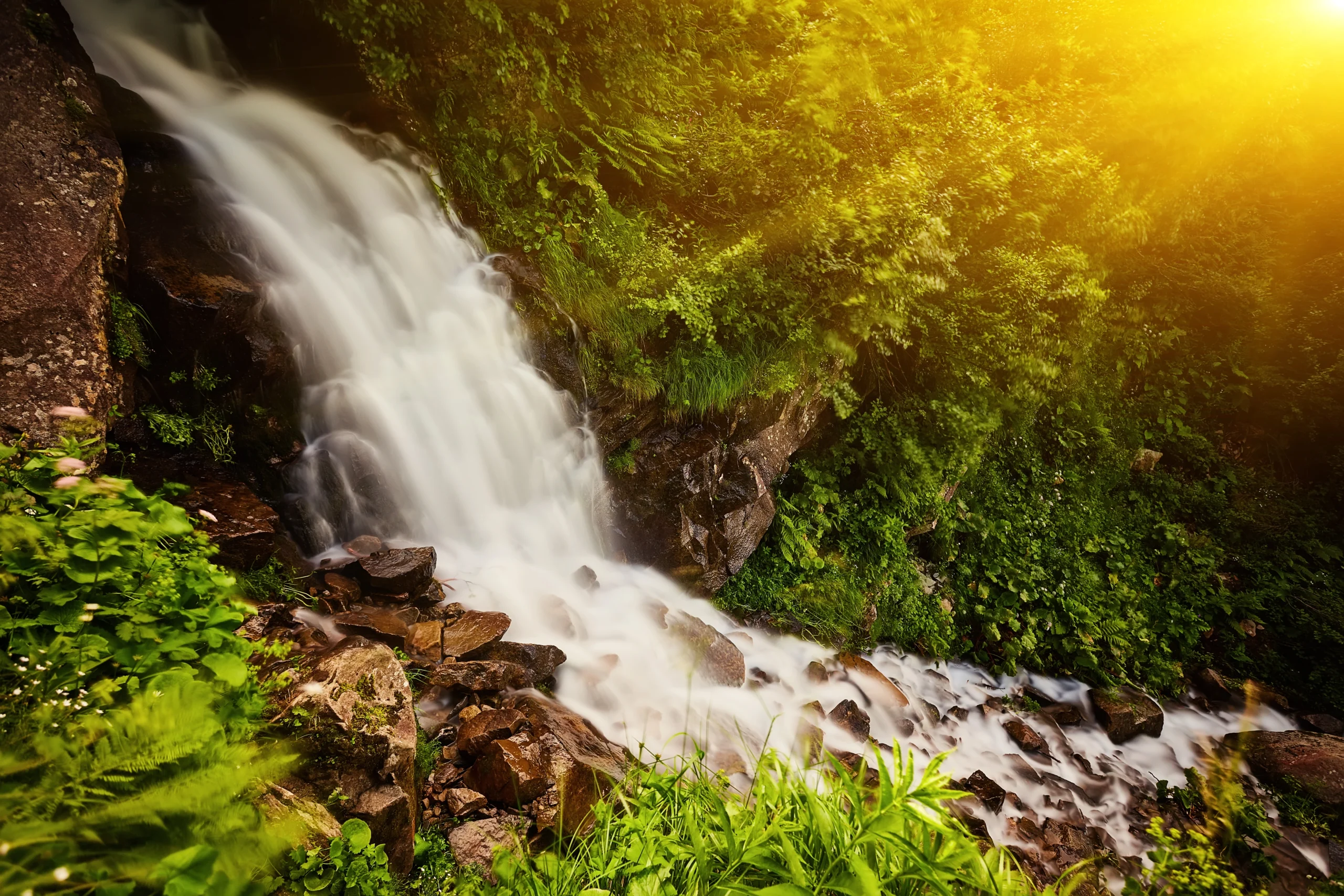
My neighbor Sarah asked me something last week while we were both watering our lawns. “Where does our water actually come from?” she said. I pointed at the sky and said rain, which technically wasn’t wrong, but it got me thinking. Most of us turn on the tap and don’t really think about what happens before that water shows up in our glass. That’s where watershed health comes in, and trust me, it matters way more than you’d think.
A watershed is just the land where rain and melting snow flow downhill into rivers, lakes, and eventually your faucet. Everything on that land – farms, parking lots, your lawn, even that factory across town – ends up affecting your water. So when we talk about watershed health, we’re talking about whether the water in your area is clean or polluted, and whether there’s enough of it.
What A Watershed Actually Is
Picture your neighborhood after a big rainstorm. Water runs down your driveway, flows along the curb, drops into storm drains, and heads somewhere. That somewhere is part of your watershed. It’s really just gravity doing its thing – water always flows downhill and collects in low spots.
Watersheds don’t care about city limits or state lines. A river might start in Montana, pick up water from six other states, and dump into the Gulf of Mexico. That means somebody dumping chemicals in Minnesota could mess up drinking water in Louisiana. We’re all connected by water whether we like it or not.
You live in a watershed right now. Could be a tiny one that feeds a local creek, or you might be part of something huge like the Mississippi watershed that covers almost half the country. Either way, what you do matters. Spill oil in your driveway? That goes somewhere. Dump fertilizer on your lawn? It doesn’t just disappear.
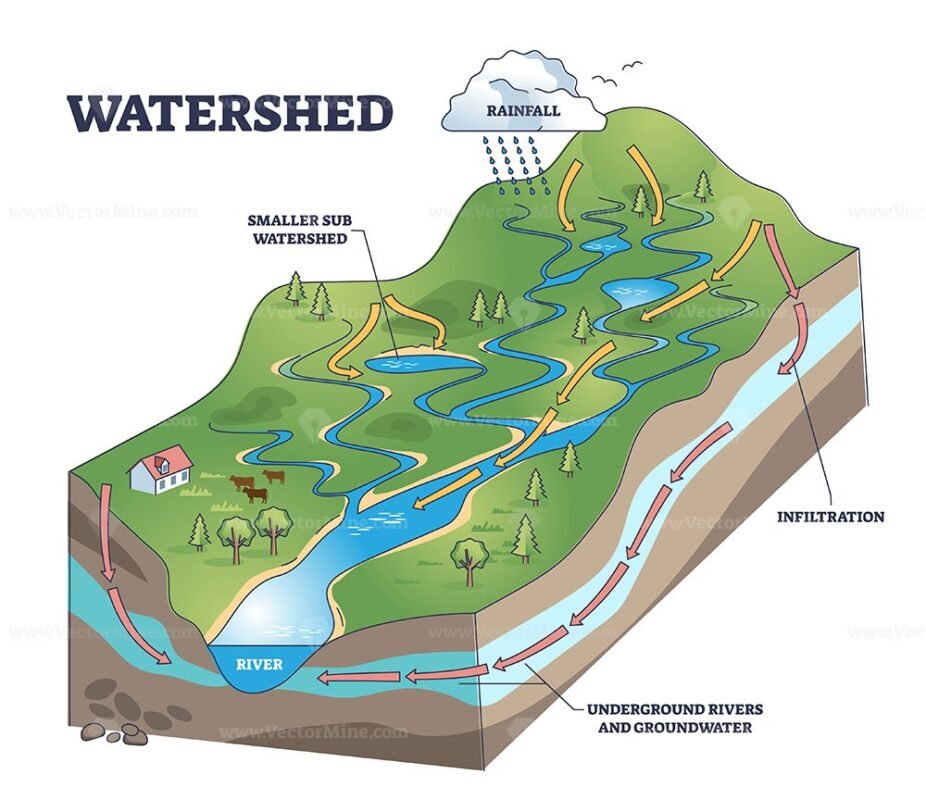
Why You Should Actually Care About This
Watersheds do a lot more than just move water around. They’re basically free infrastructure that would cost crazy money if we had to build machines to do the same jobs. The quality of your local watershed directly impacts your lifestyle and daily routines in ways you might not realize.
Clean drinking water is the obvious benefit. When watersheds are healthy, the dirt, plants, and trees filter out nasty stuff before water gets to the treatment plant. My city learned this lesson the expensive way. They cut down too many trees near the reservoir to build houses, and suddenly the water needed way more treatment. Our water bills went up 30% in two years. Flood protection matters too. Healthy dirt and plants soak up rainwater like a sponge. When developers pave everything over, water’s got nowhere to go but into people’s houses. I’ve got a friend whose basement floods every time we get a heavy rain now. Never happened until they built that shopping center up the hill from her house. Animals need clean water just as much as we do. Fish die in polluted streams. Birds can’t nest if wetlands get drained. Even deer need clean creeks to drink from. When watersheds fall apart, animals don’t relocate – they just die off. Then bugs get out of control because nothing’s eating them, plants don’t get pollinated, and the whole system crashes. This ecological balance is essential for health and wellness across entire communities.
Your house is worth more if you’re near clean water. People pay extra to live by nice lakes and rivers. Nobody wants to buy a house next to a creek that smells like sewage and has dead fish floating in it. Taking care of watersheds isn’t just tree-hugger stuff – it’s about money too.
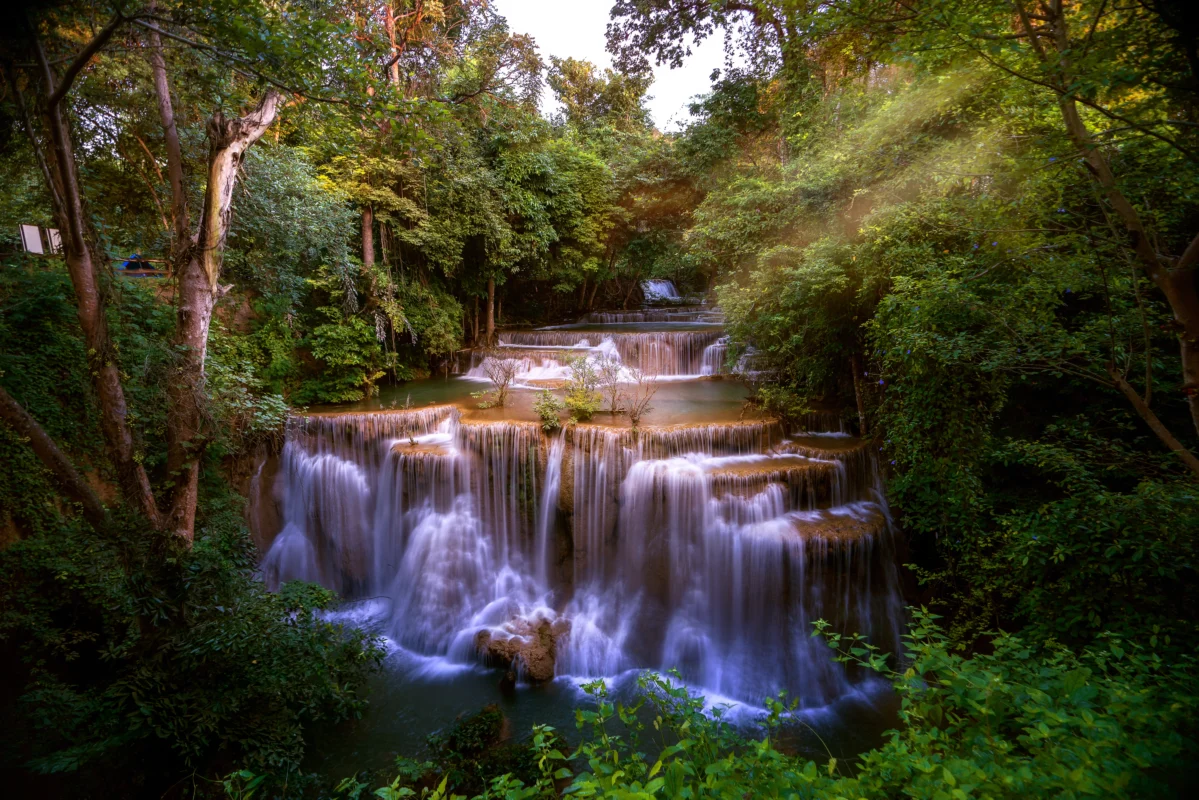
What’s Messing Up Watersheds Right Now
Watersheds face a bunch of problems these days, and honestly, we’re causing most of them.
Building too much stuff is probably the biggest issue. When you cover dirt with concrete and asphalt, rain can’t soak in anymore. It just rushes over the pavement, picks up oil and trash and dog poop, and dumps straight into the nearest stream. No filtering, no cleaning, just pure nastiness flowing into our waterways.
Farm runoff is huge too. Don’t get me wrong – farmers aren’t evil, and we need food. But modern farming dumps tons of fertilizer and pesticides on fields. When it rains, that stuff washes off into streams. The fertilizer makes algae grow like crazy, which uses up all the oxygen in the water and kills the fish. Some rivers have entire sections where nothing lives anymore because of farm pollution.
Old pipes under our cities are leaking all kinds of gross stuff. Sewer systems built 100 years ago are falling apart. Some of them overflow when it rains hard and dump raw sewage right into rivers. Yeah, it’s as nasty as it sounds. Old factory sites are still leaching chemicals into the ground decades after they closed down.
Weather’s getting weirder too. Bigger storms cause more erosion and flooding. Droughts dry up streams and make pollution more concentrated. Water temperatures are going up, which kills fish that need cold water to survive. Everything that watersheds adapted to over thousands of years is changing fast.
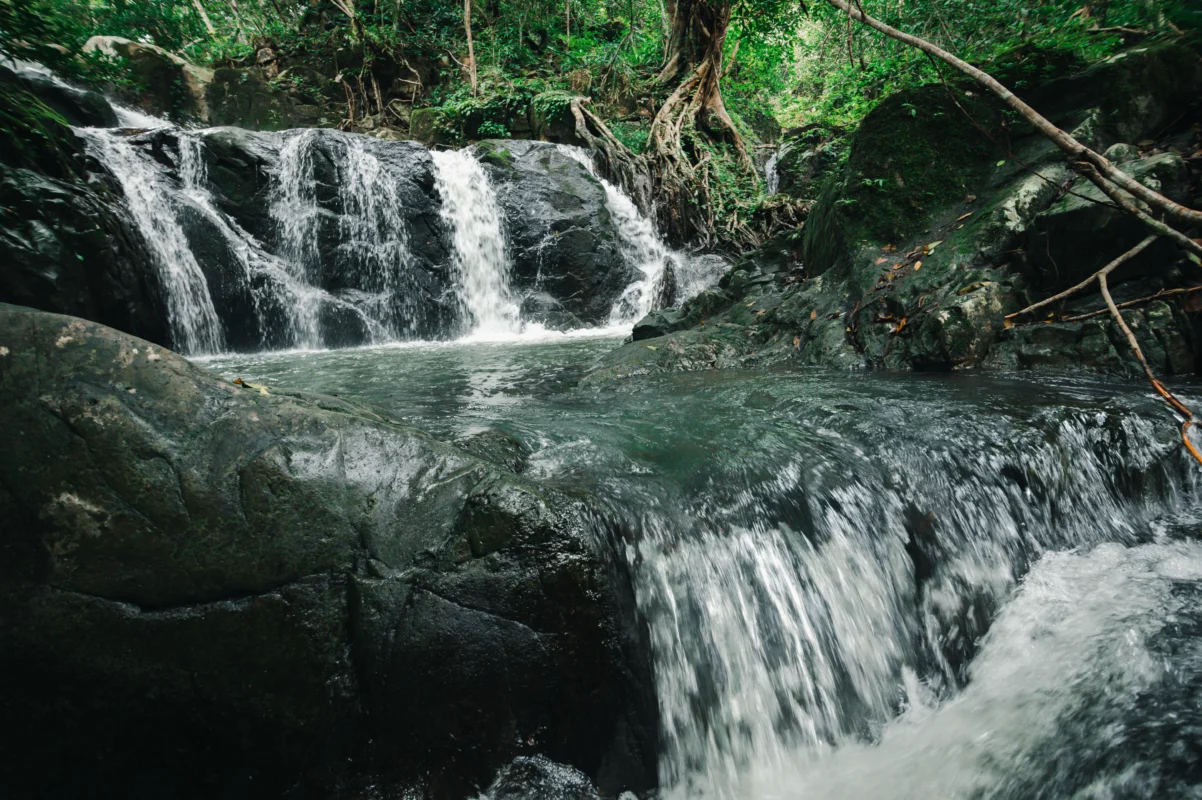
How To Actually Fix Watershed Problems
Watershed problems like flooding, pollution, and habitat loss aren’t caused by nature alone — they’re often the result of human decisions. The encouraging part is that most of these issues can be fixed with practical changes. You don’t need to be a scientist or policymaker to make a difference. Communities, landowners, and even individual residents can all play a role in restoring healthy waterways. Here’s how:
Practical Ways to Fix Watershed Problems
- Protect natural land instead of overdeveloping it: Avoid building over wetlands, forests, and streamside zones. These areas naturally filter water and reduce flooding. Cities that invest in preserving green spaces often enjoy cleaner water and lower treatment costs.
- Use rain gardens to manage stormwater: A rain garden is a shallow, planted area designed to soak up rainfall. It slows runoff, filters pollutants, and supports wildlife. Many cities now require them in new developments because they are cost-effective and attractive.
- Maintain trees and vegetation along waterways: Plant buffers near streams and rivers help prevent erosion, block pollutants, cool the water, and provide habitat. Farmers and property owners who preserve these areas are doing important environmental work and should be encouraged or rewarded.
- Enforce pollution laws more strictly: Existing regulations often go unenforced or result in small fines that companies can easily ignore. Stronger penalties and tighter rules on development near water are necessary to prevent long-term damage.
- Engage local communities in protection efforts: Stream cleanups, volunteer water testing, and watershed education programs help people understand their impact. When individuals grasp how their actions affect water quality, they are more likely to change their behavior and support conservation policies.
Stuff You Can Do Right Now
You don’t need permission from anyone to start helping watershed health today. Here’s what actually works.
Quit dumping chemicals on your grass. That perfect green lawn is poisoning your local stream. All those fertilizers and weed killers wash away when it rains and go straight into storm drains. Your lawn doesn’t need to look like a putting green. Let some clover and wildflowers grow. Use compost if you really need to fertilize something.
Wash your car at a car wash, not your driveway. Car washes recycle water and dispose of the dirty stuff properly. When you wash your car at home, soap and grime flow into the storm drain and then straight into the creek. Same with oil changes – take your old oil to a recycling place instead of dumping it.
If you’ve got a septic tank, get it checked and pumped out regularly. Failing septic systems leak bacteria and chemicals into groundwater that feeds streams and wells. It’s not fun to think about, but it’s important. My uncle ignored his for years and ended up with a $15,000 replacement bill plus a contaminated well.
Plant native trees and bushes, especially if you’ve got water on your property. Native plants have deeper roots that hold dirt better and soak up more water. They also feed local bugs and birds, unlike those weird ornamental plants from China that nothing wants to eat. If you’ve got a creek or pond, leaving wild plants around it is one of the best things you can do.
Join a local watershed group. Most areas have organizations working on this stuff. They organize cleanups, test water quality, and push for better rules. Your help matters, whether you’re picking up trash from a stream or showing up at city council meetings.
Here’s What It All Comes Down To
Watershed health isn’t some abstract nature thing – it’s the actual water you use every day. It’s whether your kids can swim in the local lake without getting sick. It’s whether your basement floods every spring. It’s how much your house is worth and what kind of future your town has.
The cool thing about watersheds is they connect all of us. What you do affects people downstream. What they do affects the next town. We’re stuck with each other whether we want to be or not. That means we all need to step up and take care of the water we share. Healthy watersheds don’t just happen. They need protection and people who give a damn. The problems are real and getting worse. But the solutions are real too, and more people are starting to pay attention. Every small action matters, every person who speaks up counts, and every watershed needs folks willing to fight for it.
Your watershed is already there, working to provide clean water, prevent floods, and keep things alive. Question is: what are you gonna do to help it out?
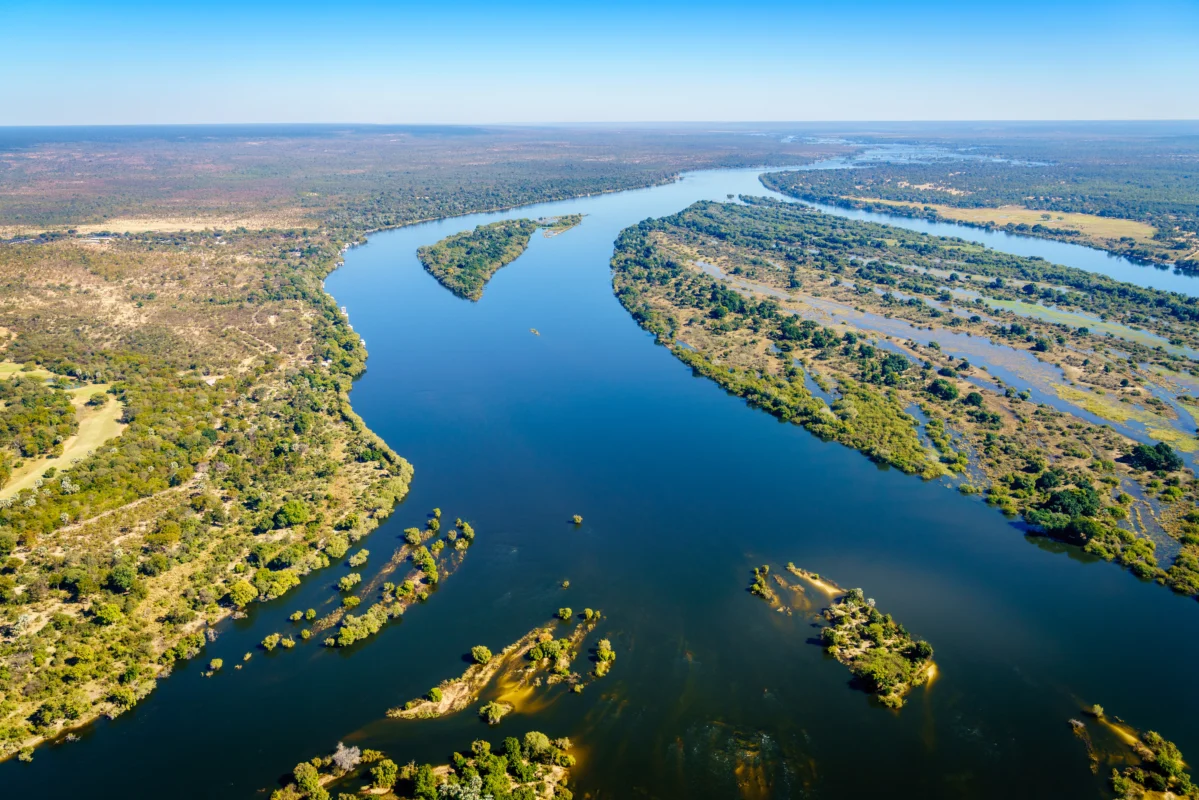
References
Environmental Organizations: Environmental Protection Agency (EPA) Watershed Academy, The Nature Conservancy, American Rivers
Research Sources: U.S. Geological Survey (USGS) Water Resources, National Oceanic and Atmospheric Administration (NOAA)
Educational Resources: Center for Watershed Protection, River Network, Local watershed councils and conservation districts
For information specific to your watershed, search for “[your area] watershed council” or contact your local conservation district.
